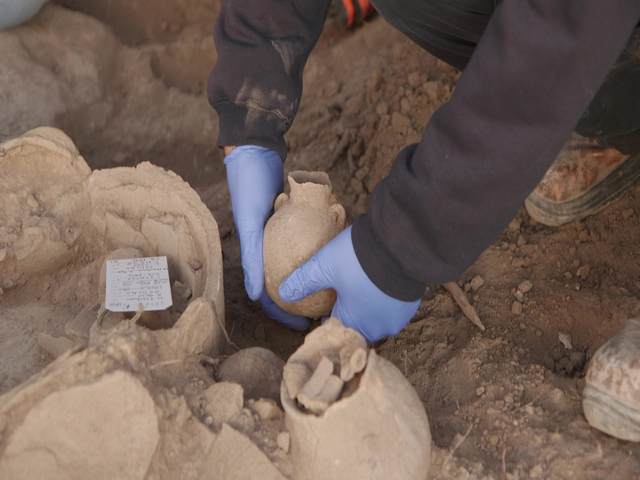Unveiling Ancient Secrets: The 5,000-Year-Old Heart of Judean Civilization
Archaeologists in Israel's Hurvat Husham have unearthed a 5,000-year-old site featuring possibly the oldest public building in the region. This discovery includes a potential temple, pottery kilns, and standing stones, indicating the area's pivotal role in early urban development and trade in the Judean Lowlands.

- Country:
- Israel
In a groundbreaking discovery, Israeli archaeologists have uncovered a 5,000-year-old human settlement in Hurvat Husham, which includes what might be the oldest public building ever found in Israel. Announced by the Antiquities Authority, the find near Beit Shemesh is shedding new light on ancient urban and social dynamics in the region.
Leading the excavation, Ariel Shatil, Maayan Hamed, and Danny Benayoun revealed a large, well-preserved structure believed to serve a public function, potentially as a temple. The building's substantial size and significant features suggest a central role in the ancient community. With few precedents in Israel from this era, the site offers rare insights into early temple architecture in the Judean Lowlands.
Among the discoveries are 40 intact pottery vessels that point to symbolic or ritualistic use, and signs of a sudden event leading to the settlement's abandonment. Two early pottery kilns indicate advanced craft production, underlining the area's economic importance. These findings reveal Hurvat Husham as a crucial center in the broader trade networks of early urban societies, marking a shift toward socio-political complexity and urbanization in the Early Bronze Age.
(With inputs from agencies.)
ALSO READ
CM Yogi Adityanath Engages with Public at Gorakhnath Temple's Janata Darshan
PM Modi Advocates 'Viksit Bharat' Vision at Swaminarayan Temple Anniversary
PM Modi Honors 200 Years of Spiritual Legacy at Vadtal Temple
Temple Tensions: MLA Yatnal Faces Backlash Over Waqf Remarks
Temple Turmoil: Arrest in Odisha After Shocking Vandalism










